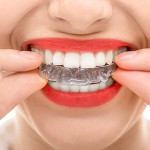What is Malocclusion
What is malocclusion?
Malocclusion means having crooked teeth or a “poor bite” Bite refers to the way the upper and lower teeth line up. In a normal bite, the upper teeth sit slightly forward of the lower teeth. Very few people have a perfect bite.
Most of the time, malocclusion is a cosmetic problem, which means that people don’t like the way their teeth look. But it can also have a serious impact on self-esteem. Plus, crooked teeth can be hard to take care of, which may lead to tooth decay or tooth loss. When malocclusion is severe, it can even cause problems with eating or speaking.
Orthodontic treatment can correct the way teeth and jaws line up, and that may help a person feel better about his or her appearance. Dentists who are specially trained to correct malocclusion are called orthodontists. They use a variety of tools and techniques to move teeth, and sometimes the jaw, into the right position.
What causes malocclusion?
Malocclusion is usually caused by problems with the shape or size of the jaw or teeth. A common cause is having too much or too little room in the jaw. If a child’s jaw is small, the teeth may grow in crowded or crooked. If there’s too much space in the jaw, the teeth may drift out of place.
Other causes of malocclusion include thumb-sucking, pacifier use, and tooth loss. Long-term mouth breathing seems to be linked to malocclusion too, but how isn’t exactly clear.
What are the symptoms?
The most obvious sign is teeth that are crooked or stick out. But there are many different types of malocclusion. For example, some people have buck teeth (called an overjet). This means that the upper front teeth are pushed outward. Some people have an underbite. Their lower front teeth sit farther forward than their upper front teeth.
How is malocclusion diagnosed?
A dentist usually checks for malocclusion in children during regular dental visits. If the jaw or teeth are out of line, the dentist may suggest a visit to an orthodontist. The American Association of Orthodontists recommends that all children get a checkup with an orthodontist by age 7.
An orthodontist will:
- Ask questions about your or your child’s past health.
- Check the mouth and teeth.
- Take X-rays and photos of the face and teeth.
- Make a plaster model of the teeth.
Start taking your child for dental checkups at 12 months of age, and get checkups done 2 times a year. This will help the dentist find any problems early. It will also help your child get used to seeing a dentist.
How is it treated?
In children and teens, crowding in the mouth is the most common problem. So the first step in treatment may be to remove some baby teeth to make room for the permanent teeth to grow in. Orthodontists avoid removing permanent teeth when possible.
Some children may need an early treatment called growth modification. For this, the child wears a device that helps move the jaw into a better position. This treatment works best during a child’s growth spurts.
The next step is to attach braces. Braces slowly move the teeth to correct the bite. They can also help move a child’s jaw into the right position.
Braces can successfully straighten an adult’s teeth too. But the only way to correct an adult’s jaw problem is with surgery.
Teeth naturally tend to drift out of place, even after treatment with braces. So you may need to wear a device in your mouth called a retainer to keep your teeth from moving. Some people need to use retainers for many years after treatment.
What else should you know about orthodontic treatment?
Orthodontic treatment often takes about 2 years, but it can take longer than planned. Treatment usually takes longer for an adult than for a child. Ask your dentist how long treatment may last for you.
If your orthodontist says you need surgery for a jaw problem, think about getting a second opinion from another oral surgeon or orthodontist. This can give you more information and help you make a decision that feels right for you.
If you’re thinking about getting braces or other orthodontic treatment, call Biermann Orthodontics today for a free consultation!
Looking for an orthodontist in Beaverton, Oregon? Biermann Orthodontics is a cutting-edge orthodontic practice that serves Beaverton and Molalla, OR, and focuses on providing world-class customer service and efficient treatment. We strive to create stunning smiles in the shortest amount of time without ever sacrificing quality.
Visit our Locations page to find a clinic near you, or schedule an initial consultation.
Biermann Orthodontics
503-690-0722
17885 NW Evergreen Parkway, Suite 200
Beaverton, OR 97006



